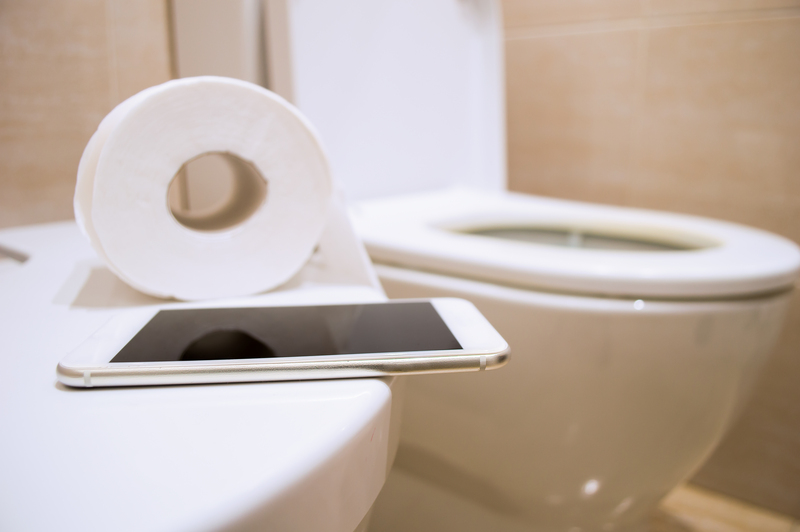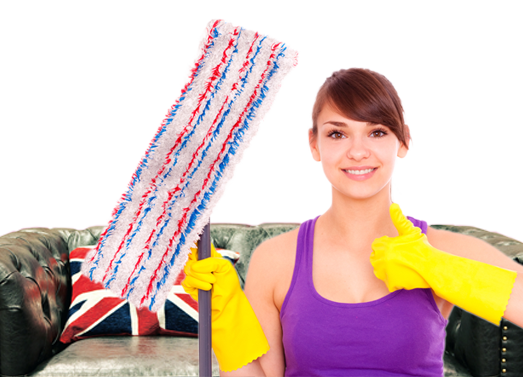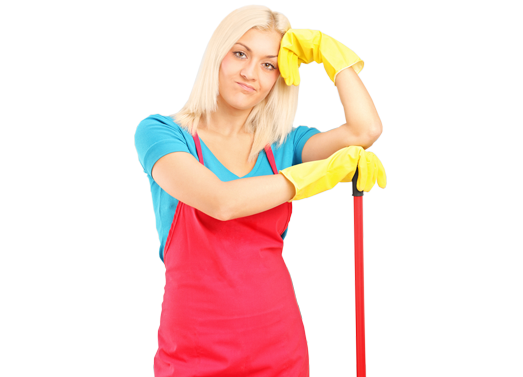Eco-Friendly Methods to Clean uPVC Window Frames
Posted on 08/06/2025
Eco-Friendly Methods to Clean uPVC Window Frames
When it comes to cleaning uPVC window frames, choosing eco-friendly methods isn't just good for the environment--it also protects your health and preserves the longevity of your windows. uPVC (unplasticized polyvinyl chloride) is a durable and low-maintenance material, but grime, mold, and dust can still accumulate over time. Discover the best green and sustainable solutions to keep your window frames sparkling clean without resorting to harsh chemicals.

Why Choose Eco-Friendly Solutions for uPVC Window Frames?
Understanding why eco-friendly cleaning is essential will help you make smarter decisions for your home and the planet. Here are some key reasons:
- Health: Avoiding toxic chemicals reduces your exposure to harmful fumes and irritants.
- Environment: Green cleaning products and homemade solutions minimize pollution and water contamination.
- Preservation: Eco-friendly methods are gentler, protecting the integrity and appearance of your uPVC windows.
- Cost-saving: Many sustainable cleaning options use inexpensive, everyday ingredients.
Essential Tools & Materials for Green uPVC Cleaning
- Soft microfibre cloths (prevents scratching the frame)
- Soft-bristled brush
- Baking soda (sodium bicarbonate)
- White vinegar
- Lemon juice
- Naturally-derived liquid soap
- Spray bottle
- Bucket of warm water
- Old toothbrush (for corners and crevices)
- Newspaper or recycled cloths for drying
Preparing Your uPVC Window Frames for Cleaning
Before diving into eco-friendly uPVC cleaning methods, it's vital to prepare the window frames:
- Remove dust and loose debris with a dry microfibre cloth or brush. Pay special attention to the corners and edges.
- Open the window (if possible) to clean all accessible uPVC surfaces.
- If your windows are particularly dirty or have mold growth, wear gloves for extra protection.
Top Natural and Eco-Conscious Ways to Clean uPVC Window Frames
1. Basic Cleaning with Soap and Water
This is the simplest and safest method for regular uPVC maintenance:
- Mix a few drops of eco-friendly liquid soap (such as Castile or plant-based dish soap) with a bucket of warm water.
- Dip a soft cloth into the soapy water, wring out excess moisture, and gently wipe down the window frames.
- Use a soft-bristled brush or old toothbrush to work on stubborn spots around hinges and corners.
- Wipe with a clean, damp cloth to remove any soap residue.
- Dry with a newspaper or towel to prevent streaks.
2. Cleaning with White Vinegar Solution
White vinegar is naturally acidic, making it effective against dirt, grease, and mineral deposits:
- In a spray bottle, mix one part white vinegar with four parts warm water.
- Spray the solution generously onto the uPVC frames.
- Let it sit for a few minutes to break down stubborn grime.
- Wipe away with a clean, soft cloth.
- For corners and tough spots, use a toothbrush dipped in the same solution.
- Finish by wiping down with a dry cloth.
3. Use of Baking Soda Paste for Stubborn Stains
For tough spots and ground-in dirt, baking soda is a gentle abrasive:
- Mix a small quantity of baking soda with water to create a thick paste.
- Apply to the stain using a soft cloth or your finger.
- Gently rub in a circular motion--do not scrub aggressively as this can dull the finish.
- Wipe away the paste with a damp cloth and dry with a clean towel.
4. Lemon Juice for Natural Disinfection and Shine
Lemon juice is a natural degreaser, freshener, and mild bleach:
- Mix the juice of one lemon with a cup of warm water.
- Use a spray bottle or cloth to apply the solution to the window frames.
- Let it sit for several minutes before wiping away with a soft, clean cloth.
- Lemon juice will help remove lingering odors and leave a clean shine.
5. Tackling Mold and Mildew the Eco Way
Mold can sometimes grow on the inside of uPVC window frames due to condensation. Here's a safe, green solution:
- Mix equal parts water and white vinegar in a spray bottle.
- Spray the mixture onto the affected area and let it sit for 10-15 minutes.
- Scrub gently with a toothbrush.
- Wipe away residue and let the area dry thoroughly.
Best Practices for Maintaining Clean uPVC Window Frames
- Regular cleaning: Wipe down window frames at least once a month to prevent dirt and stains from building up.
- Ventilation: Good airflow helps reduce condensation and mold growth on window frames.
- Check seals and drainage: Ensure drainage holes are clear and seals are intact to avoid water damage.
- Avoid harsh chemicals: Never use bleach, harsh solvents, or abrasive scouring pads as these can damage uPVC's surface.
Common Stains on uPVC Window Frames and How to Treat Them
- Grease marks: Use an eco-friendly soap solution or a slice of raw potato to dissolve oil-based residues.
- Bird droppings: Remove as soon as possible with warm water and a gentle cleaning solution.
- Paint splashes: Carefully chip off dry paint with your fingernail, then use a soft cloth dampened with vinegar water to remove any residue.
- Scuff marks: Use a paste of baking soda and water; gently rub, then wipe clean.
- Mold and mildew: Follow the eco-friendly vinegar method described above.
What to Avoid When Cleaning uPVC Window Frames
- Abrasive pads and tools: Never use steel wool, wire brushes, or sandpaper.
- Strong solvents: Acetone, paint thinners, and other industrial chemicals can damage and discolor uPVC.
- Pure bleach: While it's effective against mold, bleach can weaken uPVC and turn it yellow over time.
- Pressure washers: The high force can dislodge seals and damage the finish.
DIY Natural Cleaner Recipes for uPVC Window Frames
If you want to take your green cleaning to the next level, try these DIY recipes:
- All-Purpose Vinegar Spray: Combine 1 part white vinegar with 4 parts water and a splash of lemon juice. Store in a spray bottle for quick, daily wipe-downs.
- Baking Soda Scrub: Mix baking soda with enough water to form a thick paste. Apply with a cloth or toothbrush for tough stains and rinse well.
- Lemon and Olive Oil Polish: Mix 2 tablespoons of lemon juice with 1 tablespoon of olive oil. Wipe over uPVC frames to banish water spots and add a soft sheen.
Eco-Friendly Cleaning Products: What to Look For
When buying store-bought solutions for uPVC window frame cleaning, read labels carefully. Choose products that are:
- Biodegradable
- Non-toxic
- Free from phosphates, chlorine, and artificial fragrances
- Packaged in recycled or reusable containers
Eco cleaners are now widely available in supermarkets and online. Look for certifications like EcoLabel, Green Seal, or EU Flower.
How to Prevent Yellowing and Maintain the Brightness of uPVC
- Regular cleaning stops dirt from becoming ingrained, which can lead to discoloration.
- Curtains or blinds can help protect your uPVC from direct sunlight exposure.
- Wipe up moisture promptly to avoid staining and mold growth.
- Apply a thin film of natural polish (like a couple drops of olive oil) a few times a year to maintain gloss.
Advantages of Maintaining Clean uPVC Windows the Green Way
- Improved curb appeal: Sparkling windows enhance your home's exterior and interior.
- Longer lifespan: Eco-friendly cleaning prevents wear and extends the usability of your frames.
- Better health: Reduced exposure to allergens, chemicals, and mold means a healthier living space.
- Environmental responsibility: You're doing your part to minimize your ecological impact.

Frequently Asked Questions About Eco-Friendly uPVC Cleaning
How often should I clean my uPVC window frames?
Ideally, give your uPVC windows a thorough clean every 4 to 6 weeks, but adjust frequency depending on your location (e.g., near busy roads or in areas with high pollen counts).
Can I use commercial "uPVC cleaner" products?
Some commercial products are marketed specifically for uPVC. If you choose to use one, always select a biodegradable, low-toxicity option and avoid those containing strong acids, solvents, or artificial scents.
What if my uPVC window frames are very old and stained?
Start with the gentlest methods first. If stains are longstanding, you may need to repeat eco-friendly approaches several times. Professional restoration may be required for deeply ingrained discoloration.
Are essential oils safe for cleaning uPVC?
Certain essential oils (like tea tree or eucalyptus) have antimicrobial properties and can be added in tiny amounts to cleaning solutions for fragrance and added disinfecting power. Use only a drop or two and avoid direct, undiluted application.
Conclusion: Achieve Sustainable Cleanliness for Your uPVC Window Frames
Adopting eco-friendly methods to clean uPVC window frames is an easy and impactful practice that benefits your home, your family, and the environment. With everyday household items like baking soda, vinegar, and lemon juice, you can effectively remove dirt, stains, and mildew while keeping harsh chemicals out of your cleaning routine.
Make green cleaning a regular part of your window maintenance, and your uPVC frames will stay bright, fresh, and beautiful for years to come.
Remember: Small sustainable choices add up. Choose eco-friendly uPVC cleaning solutions and help make your household a little greener--one window frame at a time!





